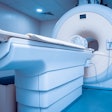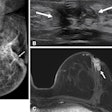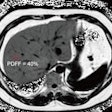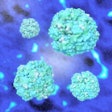There are at least five ways to reduce pollution caused by gadolinium-based contrast agents (GBCAs) -- and therefore mitigate its effects on both patients and the planet, a team of researchers has reported.
The effort to reduce GBCA pollution is crucial and will require "intervention and innovative engineering to address gadolinium pollution on a global scale," wrote a group led by medical student Makayla Long of Michigan State University College of Human Medicine in Grand Rapids. The authors' review was published October 28 in Magnetic Resonance in Medicine.
"Further research is desperately needed to better understand the long-term implications of GBCAs, and to push the boundaries of limiting GBCAs without compromising image quality and patient treatment," they urged.
Use of GBCAs in MR imaging improves the modality's diagnostic capability, but concerns remain regarding potential environmental and human health impacts of gadolinium pollution, according to the investigators. Prior studies have explored GBCA accumulation in people's kidneys and brains, while in regard to the environment, the concern is gadolinium runoff, contamination of water systems through patients' excretion of the agent via the urine, and bioaccumulation.
"The manufacturing process, administration of GBCA, and disposal/excretion of gadolinium create many points of vulnerability that result in potentially toxic pollution," the authors wrote.
Long and colleagues penned a review that examined the effects of gadolinium pollution on both human and environmental health, and proposed five strategies for mitigating gadolinium pollution:
- Reduce the overall use of GBCAs and/or use agents that have higher relaxivity. "Further reductions are likely with the use of artificial intelligence and deep learning to amplify the effects of these contrast agents," the team noted.
- Improve waste disposal/recovery techniques, perhaps through the use of multidose vials and syringeless injectors.
- Conduct research on microbial remediation methods. For example, lanmodulin -- a protein isolated from bacteria that binds to lanthanides -- attaches to gadolinium proteins and may offer a way to extract them from mine runoff and medical or electronic waste.
- Employ advanced water treatment techniques, such as nanofiltration, reverse osmosis, adsorption, and ion-exchange processes.
- Optimize gadolinium mining by reducing the need for continuous mining. "The need for gadolinium mining will decrease if we reduce the incidence of contrast MRIs and the respective concentrations of the contrast, and by capturing and recycling gadolinium for reuse from urine, wastewater, and large bodies of water," the team wrote.
The authors noted that "the future investigation of gadolinium pollution and creating solutions will be a mass collaborative effort across many disciplines such as engineers … radiologists, pharmacists and pharmaceutical companies, and scientists, and wrote that they hope their review will "inspire … action to minimize the human and environmental risk."
The complete study can be found here.




.fFmgij6Hin.png?auto=compress%2Cformat&fit=crop&h=100&q=70&w=100)


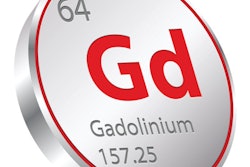

.fFmgij6Hin.png?auto=compress%2Cformat&fit=crop&h=167&q=70&w=250)

